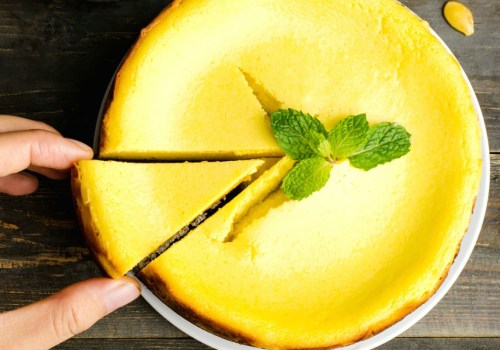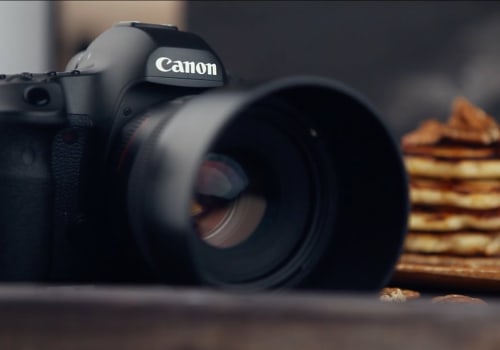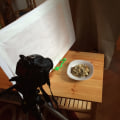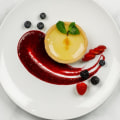Lightroom is one of the most powerful photo editing applications available today, and the split toning tool is one of its most useful features. The split toning tool allows photographers to quickly and easily adjust the color tone of their photos, giving them greater control over the look and feel of their images. In this article, we'll take a look at how to use the split toning tool in Lightroom to give your photos a unique and professional look. We'll also provide some tips and tricks for getting the most out of your split toning experience.
Tips and Tricks for Working with Split Toning
The split toning tool in Lightroom is a powerful way to add color tones to your food photography.To get the most out of the split toning tool, here are some tips and tricks to keep in mind:Adjustment Brush Tool: The split toning tool can be used in combination with the Adjustment Brush tool to apply different colors to specific areas of your photo. This is great for adding a creative touch to your food photography.
Vibrance and Saturation:
Experiment with adjusting the vibrance and saturation settings before applying any split toning. This can help you achieve a more natural-looking result.Highlight and Shadow Sliders: The highlight and shadow sliders can be used to further adjust the intensity of the colors applied by the split toning tool. This allows you to fine-tune the look of your food photography.
Presets:
Lightroom includes several presets that can be used to quickly apply split toning effects to your photos. These presets can be a great starting point for experimenting with different looks.Color Balance:
The Color Balance feature in Lightroom can be used to adjust the color balance of the highlights and shadows separately.This can be useful for creating more dynamic images.
Split Toning Panel:
The Split Toning panel in Lightroom provides several useful options, such as the ability to adjust the hue, saturation, and luminance of each color tone separately. This allows for more precise control over the look of your food photography.Creating Creative Effects with Split Toning
The split toning tool in Lightroom offers a wide range of creative possibilities when editing food photography.By applying color tones to highlights and shadows separately, you can create a range of different effects that will give your images an original look. To use the split toning tool, open the ‘Tone Curve’ tab in the Develop module and select the ‘Split Toning’ option. Here, you can adjust the Hue and Saturation settings to add tones to the highlights and shadows of your image. You can adjust the Hue setting to choose any color for your highlights and shadows. For example, you can add a warm orange hue to the highlights and a cool blue hue to the shadows for a sunset effect.
Alternatively, you can add a bright yellow hue to the highlights for a retro, vintage look. You can also adjust the Saturation setting to control how intense the tones are. To create more subtle effects, try adding grey tones to both highlights and shadows. This will give your images a more natural look and can be used to enhance certain elements of your photos. You can also experiment with different combinations of colors to create unique effects. When using the split toning tool in Lightroom, it’s important to remember that you should always adjust the settings according to the look you want to achieve.
Start by experimenting with different settings until you find something that works for you. With practice and experimentation, you’ll be able to create stunning effects with the split toning tool in Lightroom.
Getting Started with the Split Toning Tool
Using the split toning tool in Lightroom is a great way to make creative edits to your food photography. To access the split toning tool, open up a photo in Lightroom and navigate to the 'Develop' tab. Then, scroll down until you find the 'Split Toning' section. In this section, you'll be able to adjust both the highlights and shadows separately.On the left-hand side, you can choose a color for the highlights, as well as adjust the saturation and balance. On the right-hand side, you can choose a color for the shadows, as well as adjust their saturation and balance. Once you've chosen your colors, you can further adjust the look of your image by adjusting the 'Hue', 'Saturation', and 'Luminance' sliders on both sides. This will give you more control over how much of each color is applied to the highlights and shadows. Finally, you can use the 'Split Toning Balance' slider to adjust how much of each color is applied to the image overall. This is a great way to achieve a unique look for your food photography. The split toning tool in Lightroom is a powerful tool that allows you to make creative edits to your food photography.
With this tool, you can apply color tones to highlights and shadows separately, giving you more control over the final look of your images. Wrapping up, the split toning tool in Lightroom is a powerful tool that allows you to make creative edits to your food photography. With this tool, you can apply color tones to highlights and shadows separately, giving you more control over the final look of your images. Remember to experiment with different settings and combinations of tools in order to get the best results. By using the split toning tool in Lightroom, you can create unique and creative looks that will make your food photography stand out from the rest.








Leave a Comment